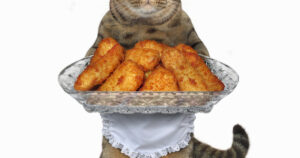With their bright, orange, and golden shades, ginger cats look adorable and give off a positive vibe. There’s just something about their sunny color that radiates warmth and matches their famously outgoing and friendly personalities. From Garfield to Morris the Cat, pop culture’s most iconic cat characters boast glorious orange fur.
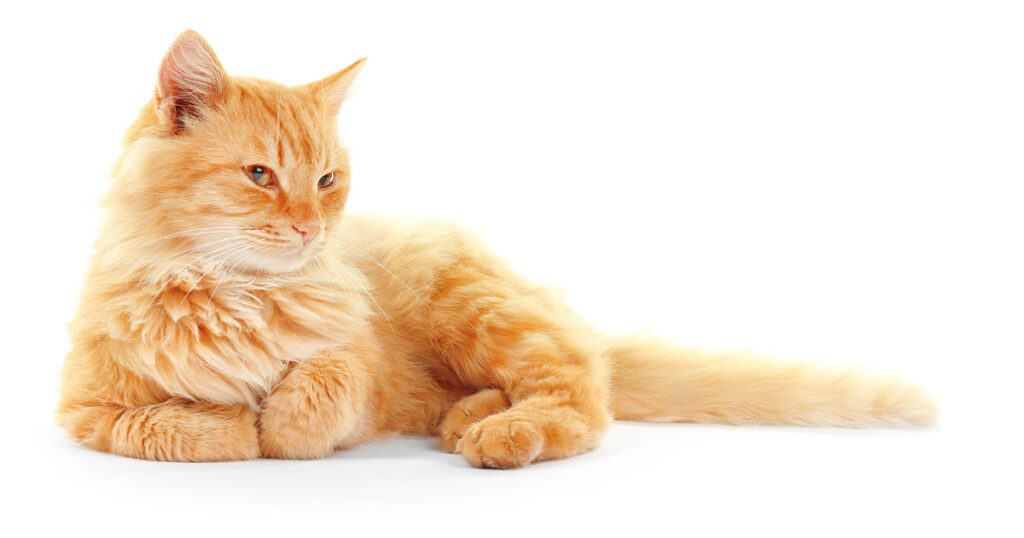
If you’ve been thinking about adding one of these fiery-colored kitties to your home, it helps to understand what makes certain orange cat breeds unique. While all cats have traits, some breeds are prone to specific qualities and needs.
Explore some popular orange cat types and what draws people to them. Discover which appearance, personality, and care requirements best fit your lifestyle.
Abyssinian

The Abyssinian is one of the most royal-looking orange cat breeds, with a rich red coat and distinctive ticked fur. These cats are believed to have originated in Egypt, which explains their elegantly exotic appearance.
Abyssinians are known for being curious, playful, and always on the move. They love to jump, climb and explore their surroundings. This means they require a good amount of daily activity and mental stimulation.
Interactive toys and challenges are a must to keep an Aby easily entertained. Expect this breed to show off its agility by leaping as high as 6 feet in the air to catch a toy!
While Abyssinians aren’t exactly lap cats, they enjoy receiving affection from their humans. They form close bonds and don’t like to be left alone for long periods.
Munchkin
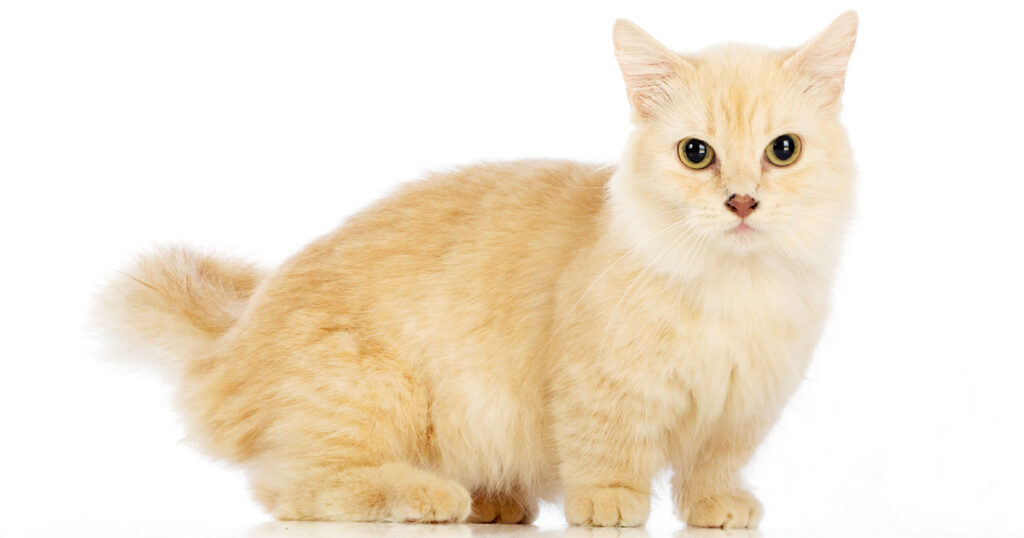
With their tiny legs and rounded teddy bear-like faces, Munchkin cats are undeniably adorable. While controversial due to health concerns associated with breeding for short legs, Munchkins have earned quite a following among cat fans.
These petite kitties are big on personality. Known for being playful, intelligent, and affectionate, Munchkins love interacting with their human families. They’ll happily snuggle up on your lap when playtime is over.
Munchkins come in a wide array of colors and patterns. You can find them with orange tabby stripes or solid shades of red, apricot, and peach. Their small size makes them suited for small homes and apartments.
Just give them great toys to keep their minds and bodies active. Munchkins will tell you when they want your attention by dropping cat toys at your feet or “talking” to you.
Persian
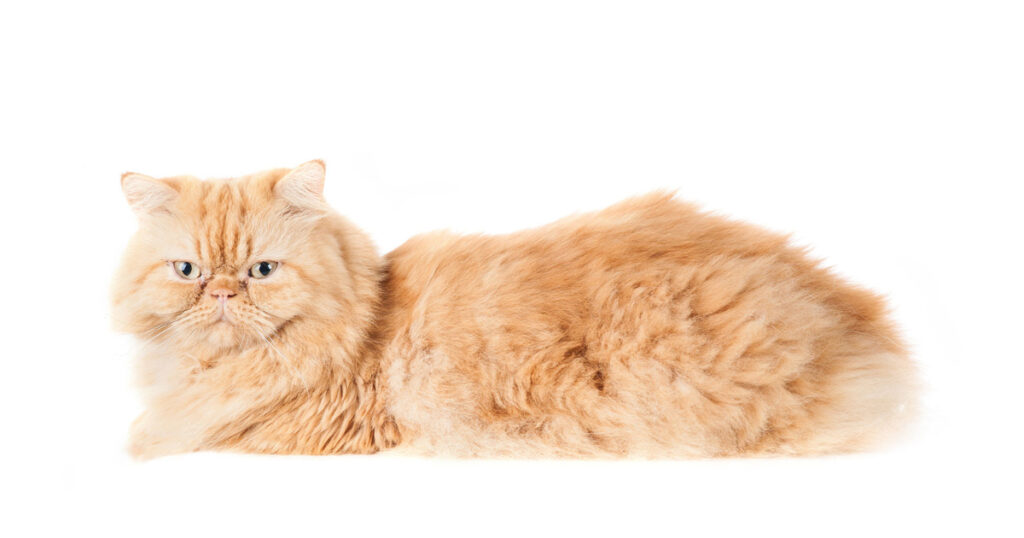
The Persian cat probably comes first when most think of a pampered pet. Their long flowing coats and sweet temperaments have made Persians a favorite cat for centuries.
While Persian cats appear in various colors, their orange coats are especially eye-catching. Shades can range from pale ginger to deep orange tabby.
These are laid-back, gentle cats that thrive on human interaction. They love lounging by their preferred people and chatting with soft mews and chirps.
Daily grooming is a must for the Persian’s thick, luxurious coat. Expect to brush and comb them thoroughly to avoid tangles or mats. For some, the grooming ritual can be therapeutic bonding time.
The Persian is a classic choice if you’re searching for a loving and devoted orange companion. Just be prepared to put in the work of maintaining that glorious fur.
Maine Coon

The Maine Coon stakes its claim as one of the largest domestic cat breeds out there. These gentle giants have semi-long, shaggy coats and can weigh up to 25 pounds! Yet surprisingly, they tend to have dog-like personalities.
Maine Coon cats are incredibly social and loyal. They’ll follow their owners around the house and respond when you call their names. Many even enjoy playing fetch.
While not overly needy, Maine Coons appreciate having family time and interacting with their humans. A Maine Coon who’s home alone all day will surely tell you they missed your company.
These kitties come in many colors, with classic orange tabby being one of the most beloved options. Daily brushing helps keep their fur manageable and reduces shedding.
Providing a Maine Coon with sufficient exercise and playtime will make for a happy cat and owner. Just a few minutes a day of wand toy chasing or laser pointer hunting goes a long way.
British Shorthair
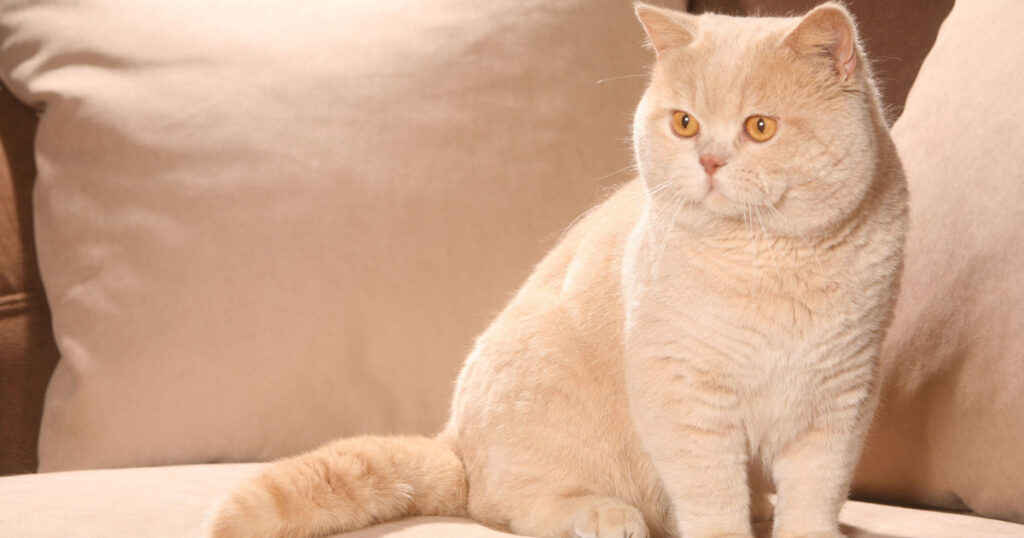
With its round face, chubby cheeks, and stocky build, the British Shorthair is an undeniably cute breed. While typically associated with gray fur and copper eyes, British Shorthairs come in lovely shades of orange and cream.
These even-tempered kitties are perfectly satisfied lazing the day away. They aren’t overly demanding attention but appreciate having their people around.
Many British Shorthairs form close bonds with their family yet maintain their independent spirit. Expect yours to follow you from room to room to keep you in sight.
The British Shorthair’s densely plush coat requires brushing at least twice weekly to look its best. For some owners, grooming time provides enjoyable one-on-one time with their cats.
Overall, British Shorthairs make devoted and polite pets. Their mellow personalities fit in well with almost any household dynamic.
Exotic Shorthair
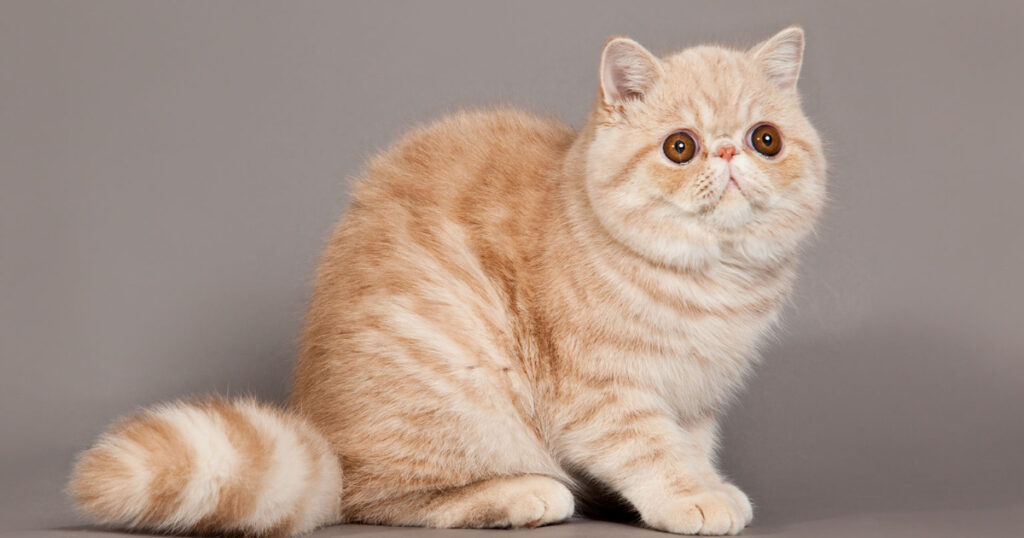
Fans of the Persian breed who find its grooming needs too demanding often turn to the Exotic Shorthair instead. Developed from crossing Persians with American Shorthairs, Exotics look like Persians with thicker, shorter coats.
These easy-going kitties are the perfect choice for those seeking a Persian personality in a lower maintenance package. They are generally relaxed yet playful when the mood strikes.
Exotics will follow their families, always wanting to be near the action. They also maintain their kitten-like curiosity and want to play for play well into adulthood.
While Exotics shed less than Persians, their plush coats still require weekly brushing to minimize loose hairs around the home. Activity levels are low, so they are content with short play sessions.
For Persian cat fans who lack the time for extreme grooming, the Exotic Shorthair can fulfill your desire for this breed in a more manageable form.
American Bobtail
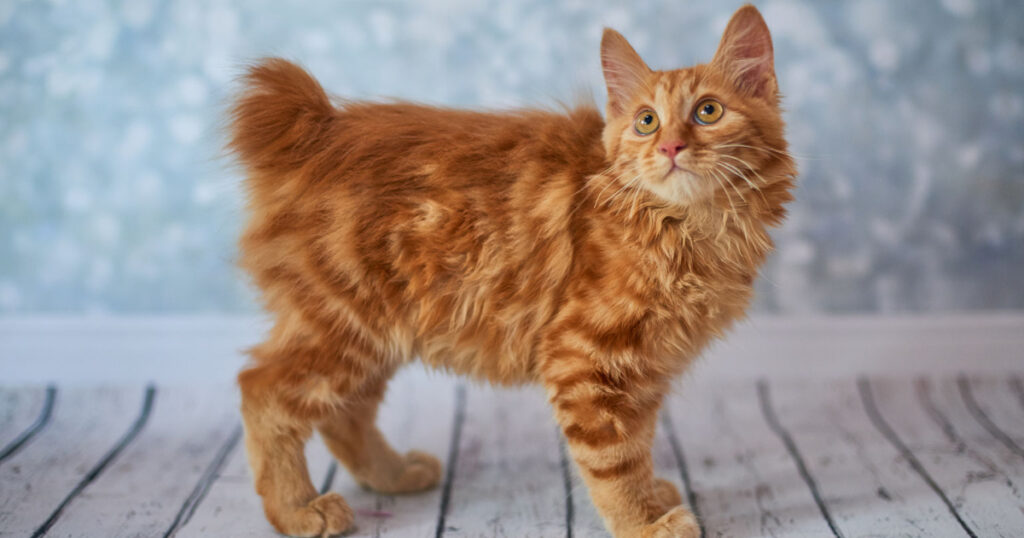
The American Bobtail breed is hard to miss, with its short tail resembling a bobcat’s. But what draws attention is their loving personality.
Bobtails are highly devoted to their human families. They want to be involved in everything you do and will oversee your daily activities.
Owners describe American Bobtails as smart, interactive cats that bond very closely. They often play fetch and can learn tricks or commands.
While not actually related to wild bobcats, American Bobtails do resemble them. They have shaggy fur in various colors and patterns, including orange tabby.
These energetic cats thrive when given plenty of playtime and exercise. Be sure to provide yours with cat towers for climbing and interactive toys to pique their natural hunting instincts.
With their warm hearts and playful spirits, American Bobtails make outstanding feline companions. Their bond with you will be one of true friendship.
Bengal
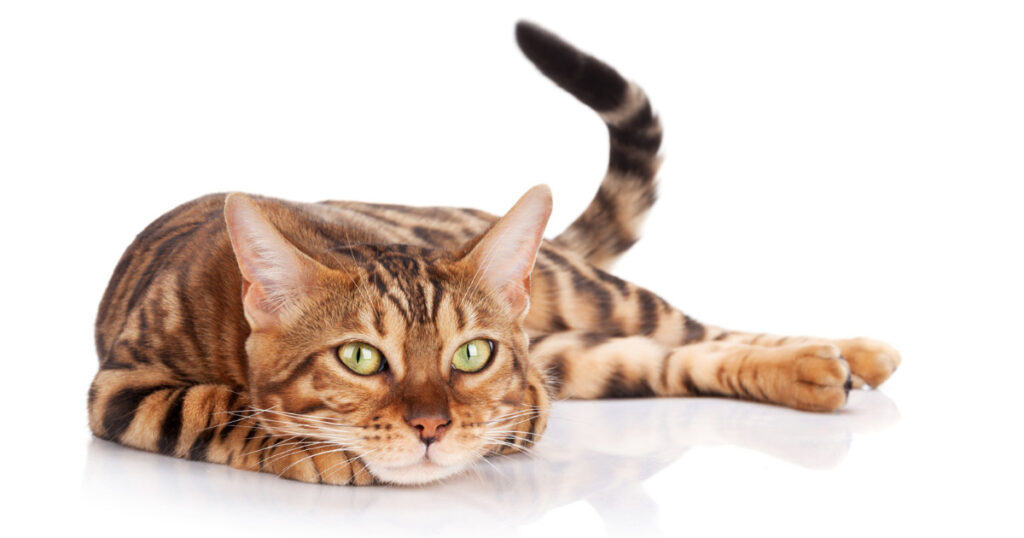
The first thing you’ll notice about a Bengal cat is its exotic leopard-like appearance. But Bengal lovers will quickly tell you these cats have unique personalities too.
Bengals resulted from breeding small wild Asian leopard cats with domestic shorthairs. While they look exotic, Bengals are affectionate and form strong bonds with their families.
These energetic, brilliant cats do best in active homes with owners who can engage with them frequently. Bengal cats often enjoy playing in the water, learning tricks, and taking leash walks.
Bengal cats come in striking “pelt” colors like orange rust, cinnamon, and rich red. Their rosette spotting gives them an extra dose of jungle flair.
While beautiful, a Bengal’s wildcat genes make it more demanding than the average house cat. If you wish to share your home with a Bengal, ensure you have the time and energy to meet this breed’s needs fully.
Turkish Angora
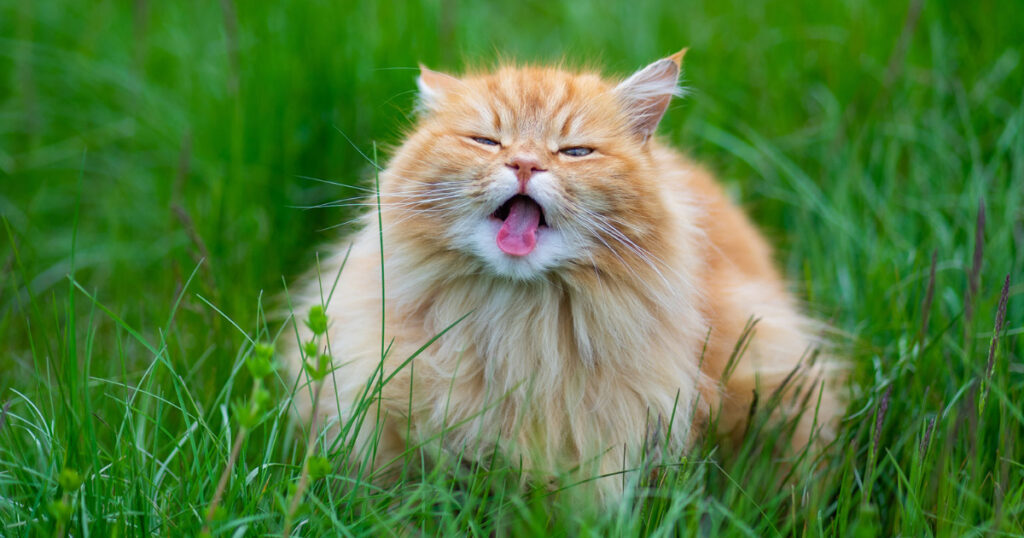
Everything about the Turkish Angora conveys elegance, from the breed’s long flowing coat to its graceful, fine-boned body structure. So it may surprise some that these cats also have a silly, fun-loving side.
Turkish Angoras thrive on play and mischief into adulthood. Owners often remark on their cats’ sense of humor and their amusing antics.
These clever orange cats will find ways to “help” you around the house – which usually means getting into things they shouldn’t! They also love surprise attacks, chasing, and climbing to high places.
While Turkish Angoras enjoy their playtime, they also appreciate pampering. Their long, silky coat requires daily brushing to keep them looking spectacular and tangle-free.
The Turkish Angora fits the bill for those seeking a stunning, silly, and sophisticated cat. Just be prepared to put in the grooming work to maintain that lovely fur.
Somali

One glimpse of the Somali cat makes their fox-like qualities apparent. These long-haired beauties have thick, bushy tails and large pointed ears. And they are just as clever as their foxy counterparts.
Somali cats are quick learners and can even be taught tricks with patience. They’ll wow you by opening doors, turning faucets on, and playing fetch.
Smart as they are, Somalis do have naughty tendencies. They love to test gravity by knocking objects off counters and climbing new heights.
These extroverted cats want to be at the center of family activities. They’ll “talk” to get your attention and bring you toys as invitations to play.
The vibrant orange Somali has much to offer for the person seeking a beautiful and brainy cat. Daily grooming is a must for their semi-long double coat. But if you keep their agile minds engaged, they’ll return the favor with love and amusement.
Devon Rex
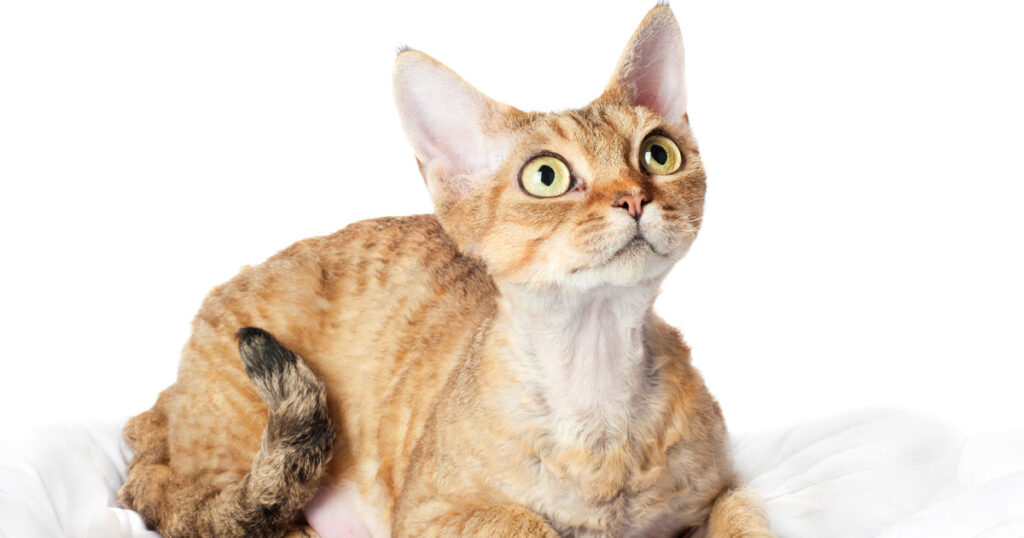
One glimpse at those enormous ears, and you’ll see why the Devon Rex is compared to elves, aliens, and even gremlins! But their “pixie” faces have a charming appeal too.
Despite their unusual appearance, Devon Rex cats aim to please their owners. They are perceptive to human emotions and often try to comfort sad or upset individuals.
Devon’s mischievous nature balances out its nurturing side. They keep owners entertained with their clownish pranks and ability to learn tricks.
Owners of this breed appreciate their cats’ curly, low-maintenance coats, which shed very little. Occasional grooming to reduce oil buildup is all that’s usually required.
For people who find beauty in things a bit quirky and unconventional, the Devon Rex cat offers looks and personality in spades. Their desire for playtime and interaction makes for a fun yet affectionate companion.
Chausie
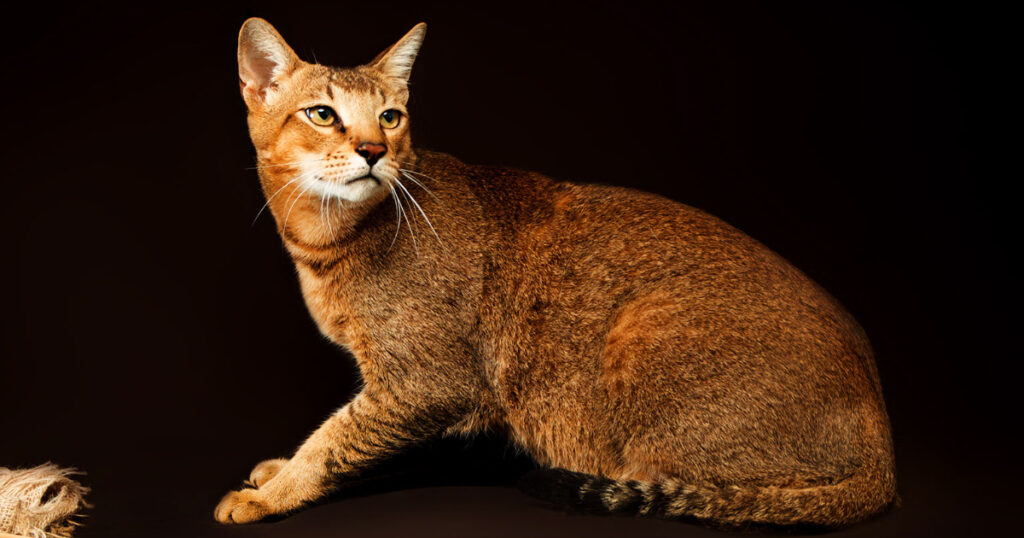
One glimpse at the Chausie cat, and you can instantly see its resemblance to its jungle cat ancestors. These tall, leggy cats almost resemble miniature cougars.
While undeniably stunning, Chausies also have the energy and prowess of their wild ancestors. They love climbing, running, jumping, and anything involving movement and agility.
To thrive as a house cat, the brilliant Chausie requires plenty of toys for solo play and interactive engagement with humans. They’ll enjoy learning tricks, solving puzzles, and playing fetch.
The Chausie’s short coat requires minimal grooming. But be prepared to provide this athletic breed with abundant opportunities for exercise through games and play.
A Chausie can make an outstanding companion for people who desire a fiercely beautiful pet and have the means to keep it stimulated. Just provide it with the high activity levels this breed demands.
FAQ
What is the rarest orange cat breed?
The most rare and unusual orange cat breed is the Egyptian Mau. Unlike other breeds that humans have selectively developed, Egyptian Maus occurred naturally.
They are the only naturally spotted domestic cat with distinctive markings and glowing orange coats. Only a few thousand exist worldwide today. Their rarity comes from minimal breeding populations.
Why do all orange cats have markings/patterns in their fur and no solid-colored coats?
The gene that codes for orange pigment also causes tabby markings to appear in fur. So essentially, all orange cats express the tabby pattern gene to some degree, even if just faintly.
Two recessive genes – one for orange color and one for a solid coat – would have to occur together to result in an all-over orange cat with no stripes, spots, or ticking. This is highly uncommon.
Do male and female orange cats have different personalities?
While individual personality differs across all cats, there are no reported widespread distinctions between male and female orange cats.
Character is much more influenced by breed tendencies, early life experiences, socialization, and other factors not related to gender.
Which orange cat breeds get along best with dogs?
The Maine Coon and American Bobtail are excellent orange cat breeds with dog-friendly personalities. Both are known for being highly social, loyal, and outgoing with family.
They’ll often play fetch and learn commands as dogs do. Of course, early socialization and training help any cat accept the presence of dogs peacefully. But these breeds’ friendly natures give them an edge for multi-pet households.
Conclusion
While all cats have beautiful qualities to appreciate, orange felines possess an extra dose of charm. Their vibrant coats naturally catch our eye, and their reputations as outgoing, playful companions make them highly in demand. By learning about breeds like the busy Abyssinian, sweet Persian, lively Bengal, and others, you can find an orange cat suited for you.
Remember that proper care, including grooming and activity, is key to your cat’s health and happiness. If you’re willing to meet the unique needs of any cat you adopt, your orange furry friend will reward you with years of joyful companionship and beautiful cat memories.



